Soil Conditioners: Essential Amendments For A Thriving Garden
Are you tired of struggling with poor soil quality, lackluster plant growth, or nutrient deficiencies in your garden? In this comprehensive guide, we dive deep into the world of organic soil conditioners, exploring various types and their benefits, and how to use them effectively to create a thriving, productive garden.
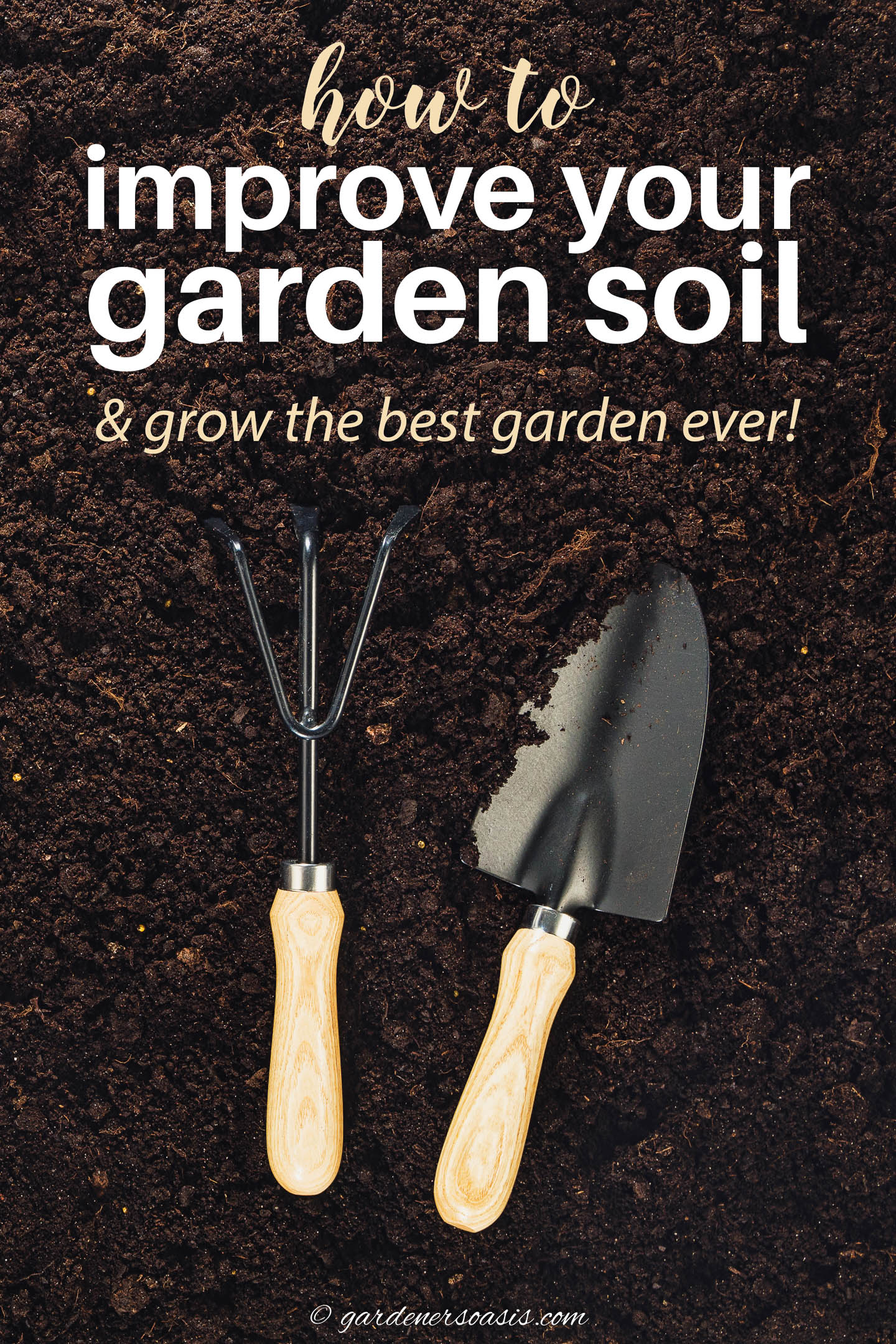
Soil is one of the most important factors in growing a beautiful garden.
And unfortunately, most of our gardens don’t have ideal conditions.
You may have compacted, heavy clay that roots can’t grow through (like me).
Or really sandy soil that doesn’t retain water or nutrients (like my mother).
In either case, there is a solution. And soil conditioners are it.
These simple amendments can take even the worst sand or clay and turn it into fertile soil that can produce a beautiful garden.
What is a soil conditioner?
This post may contain affiliate links. We make a small commission if you buy the products from these links (at no extra cost to you). As an Amazon Associate, I earn from qualifying purchases. But we only recommend products we would use ourselves. For more information, click here to see our disclosures.
Soil conditioners are amendments that are added to your soil in order to improve its structure and ability to provide water and nutrients for your plants.
They change your soil’s structure, making it more “crumbly” for clay soils, and allowing the particles to stick together better for sandy soils.
Both of which promote plant growth, enhance nutrient availability, and contribute to overall soil health.
These are not to be confused with additives which supply nutrients but don’t change the structure of the soil (such as fertilizers). They are amendments but aren’t considered soil conditioners.
While soil conditioners are available in non-organic and organic forms, the organic ones do such a good job, I have never even tried the former.
Organic soil conditioners
Organic soil conditioners are natural, environmentally-friendly materials that improve the physical and biological properties of soil. They are an essential aspect of sustainable gardening and agriculture, as they promote plant growth, enhance nutrient availability, and contribute to overall soil health.
Here are my favorites:
1 | Compost
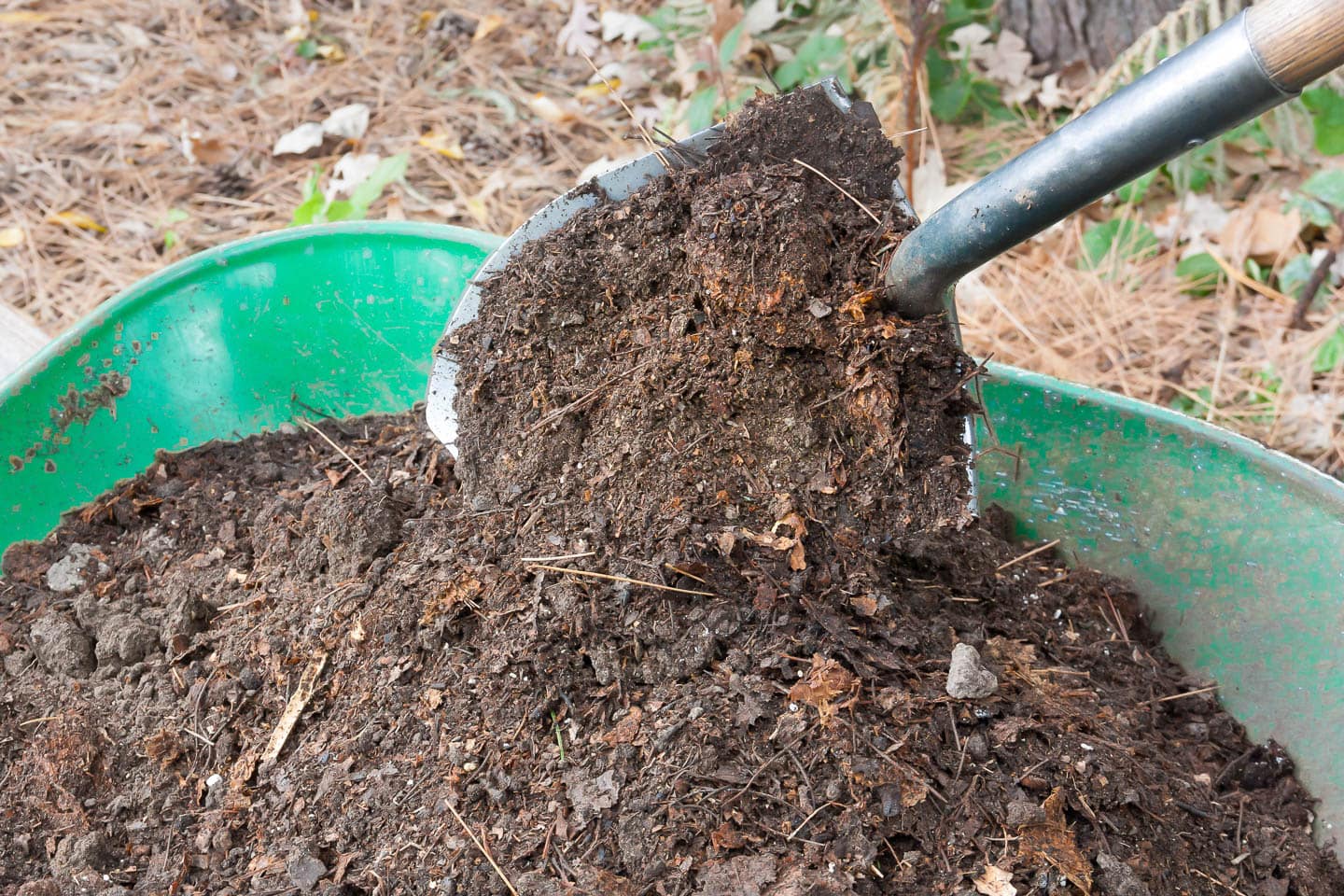
Compost is decomposed organic matter rich in nutrients and beneficial microorganisms. It improves soil structure, retains moisture, and provides a slow-release source of essential nutrients for plants.
Which makes it the single best amendment you can add to your soil.
To create compost at home, mix together green materials (e.g., grass clippings, kitchen scraps) and brown materials (e.g., leaves, straw) in a compost bin or pile.
Turn the mixture regularly to facilitate the decomposition process.
Once fully decomposed, apply compost as a top dressing or mix it into your garden beds.
For the best results, add 2 to 3 inches of compost every year or two to replenish the supply of nutrients.
2 | Well-rotted manure
Manure, derived from animal waste, is another excellent organic soil conditioner.
It adds essential nutrients and organic matter to the soil, enhancing its structure and fertility.
Only use manure from veggie-eating animals such as cows, horses and rabbits, as excrement from meat-eating animals contains high levels of protein that doesn’t break down easily.
When using manure, it is crucial to ensure that it is well-aged or composted to avoid burning plants and minimize the risk of pathogens.
3 | Worm castings
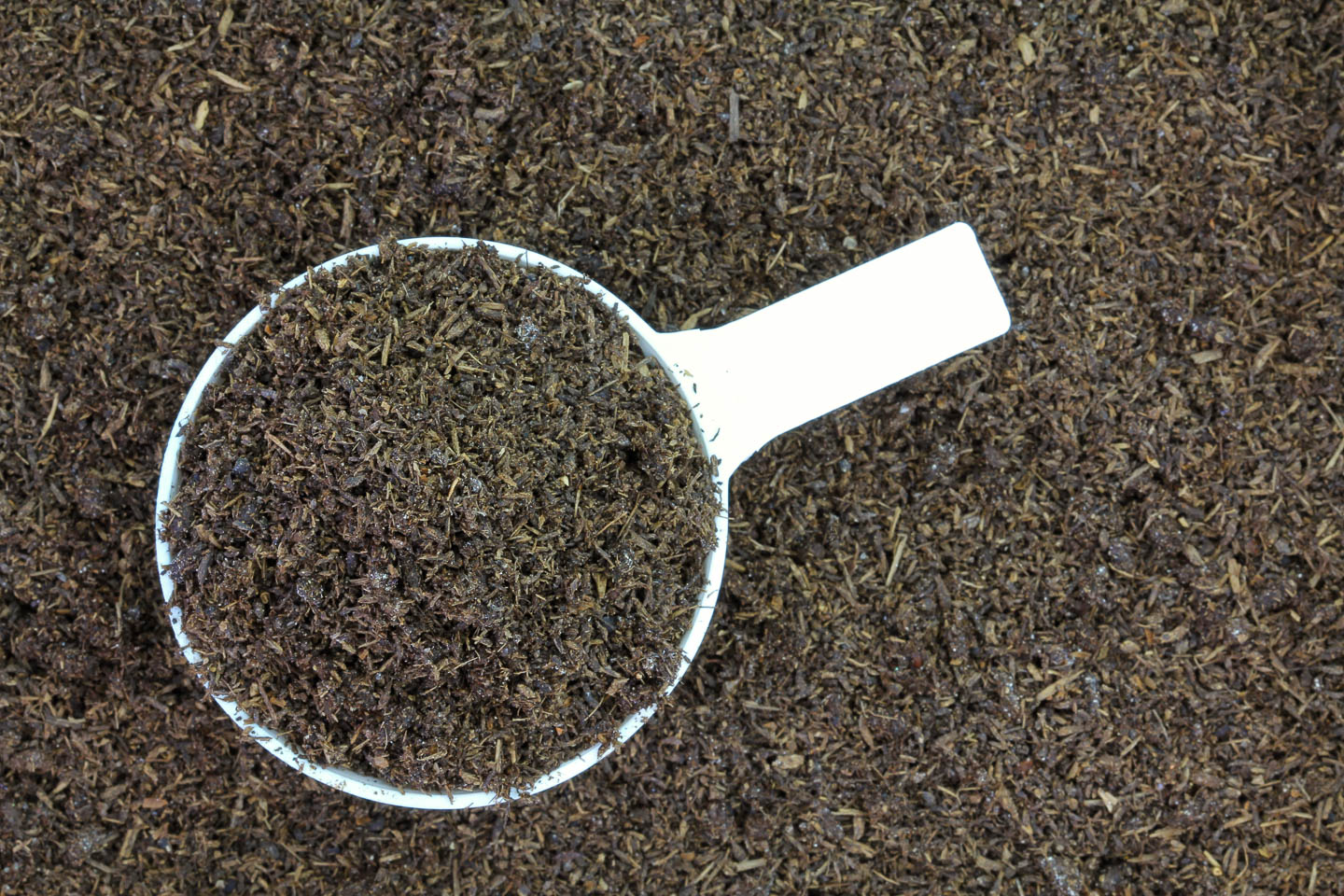
While worms may not be what comes to mind when you are thinking about soil amendments, they are a great way to improve your soil condition.
Worm castings or vermicompost is the nutrient-rich end product of the decomposition of organic matter by earthworms.
It improves soil structure, increases nutrient availability, and supports beneficial soil organisms. And can be used as a top dressing, soil amendment or in compost tea.
To get worm castings, you can either buy bags of it or make your own.
The bags are convenient and available from most big box stores or garden centers. But they are pretty expensive.
To make your own worm castings, you have a few options. These involve buying worms to start with (they are available at garden supply stores or fishing tackle shops). But once a healthy environment has been created, the worms will begin to multiply on their own.
- Introduce more worms to your garden so they can naturally aerate and add worm castings to your soil. This only works if your soil is somewhat useable already since the worms will die if they can’t find enough food and the right amount of moisture to survive.
- Add store-bought worms to your compost pile. They will speed up the composting process and produce better quality compost at the same time.
- Set up a worm bin with bedding material (such as moistened shredded newspaper or coconut coir) and add food scraps. Harvest the vermicompost and apply it to your garden as a top dressing or mix it into the soil. To find out more, read this worm composting article from Clemson University.
4 | Biochar
Biochar is a type of charcoal produced from organic materials, such as wood or agricultural waste, created by slowly burning them with low oxygen in a process called pyrolysis.
It has a porous structure that holds water and nutrients so that plant roots can access them. It’s also improves soil aeration which can really help with compacted clay soil.
And unlike regular compost, it takes a long time to break down. So you don’t need to re-apply it as often.
While this organic soil conditioner is fairly new to modern gardeners, natives in the Amazon jungle have been using their version of it for thousands of years.
Incorporate biochar into your garden beds, either by mixing it into the soil, adding it to your compost or spraying it on the ground as a liquid slurry.
You can find it HERE* on Amazon
5 | Sphagnum moss
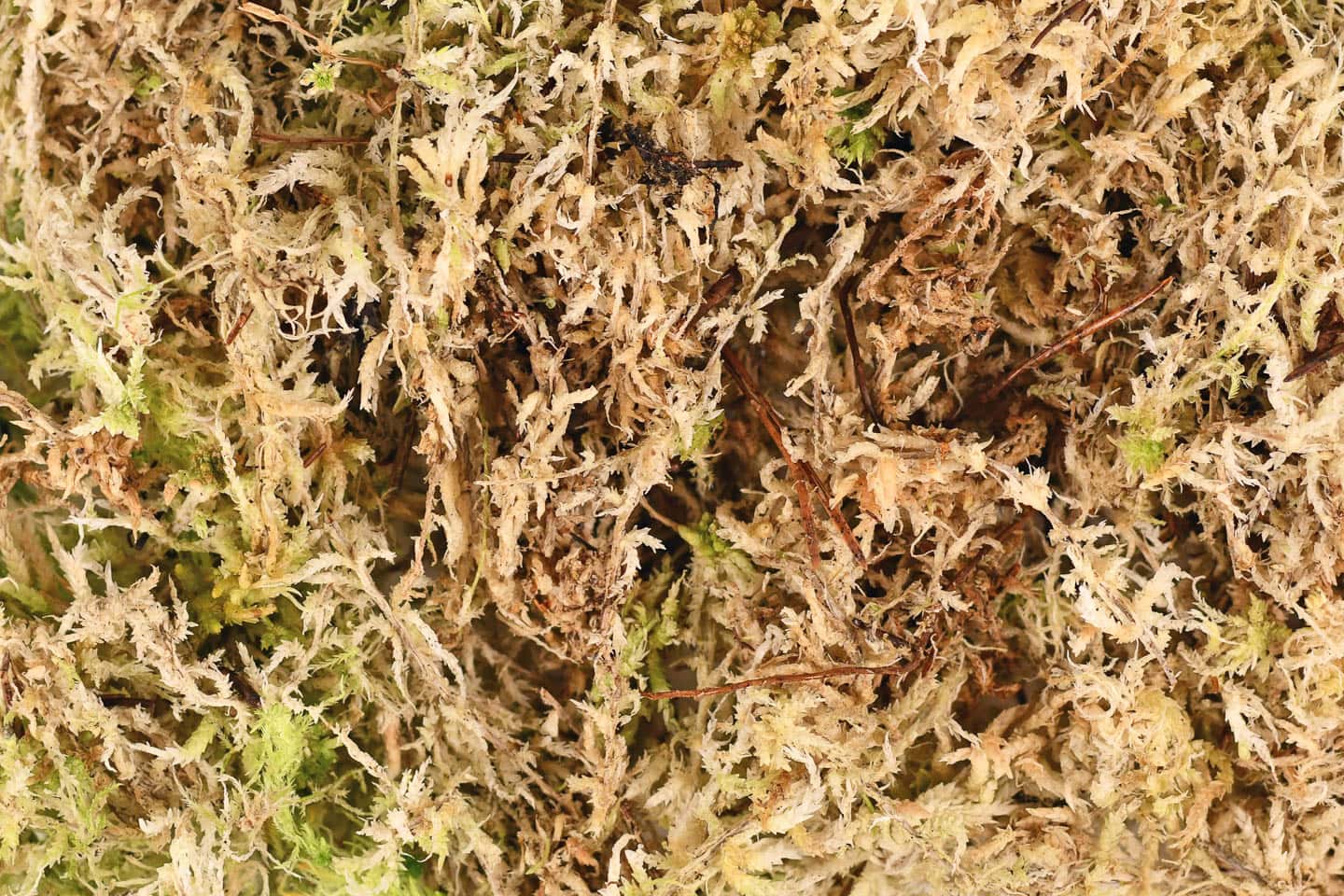
Peat moss and sphagnum moss are two parts of the same plant. But sphagnum moss is the top layer which can be harvested without destroying the ecosystem. Unlike peat moss which is taken from the bottom of the bog and takes years if not centuries to be re-generated.
Sphagnum moss has a neutral pH and slow decomposition rate, which provides long-lasting benefits to the soil such as improved aeration and water retention.
Mix sphagnum moss with other soil conditioners, such as compost or aged manure, to create a well-balanced soil mix.
Then use it as a top dressing for potted plants, seedlings, or garden beds that require improved moisture retention and aeration.
When purchasing, make sure the sphagnum moss is sustainably sourced and harvested to minimize environmental impact (not to be confused with sphagnum peat moss which is how peat moss is sometimes labelled).
6 | Mulch
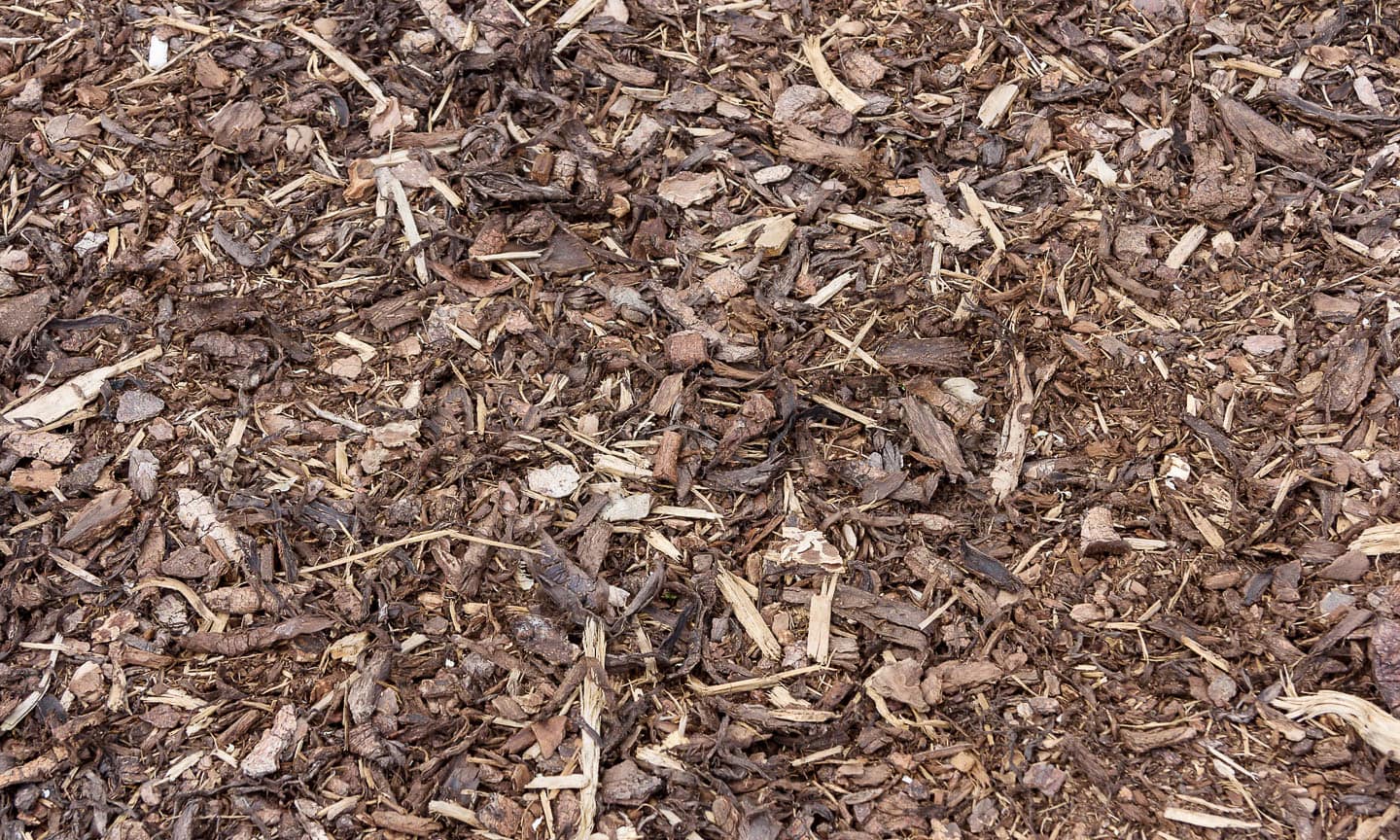
Mulch is a layer of organic or inorganic material applied to the surface of the soil to help conserve moisture, suppress weeds, regulate soil temperature, and prevent erosion.
Organic mulches, such as wood chips, straw, leaves, or grass clippings, also improve soil structure and fertility as they decompose.
Apply a 2-4 inch layer of mulch around your plants, leaving a small space around the base of the plant to prevent rot and pest issues.
Replenish the mulch when it starts to decompose and thin out, usually once every year or two.
Keep in mind that some mulches, such as wood chips, may temporarily tie up nitrogen in the soil as they decompose, so it might be necessary to add a nitrogen source, like compost or aged manure, to counteract this effect.
Best soil conditioners to improve clay soil
In my garden (which has heavy clay soil), I dig triple mix into every garden bed I create. It has a combination of top soil, compost and sphagnum moss which all help to break up the clay making moisture and nutrients available to the plants.
I then top it with a 3″ to 4″ layer of double-ground hardwood bark mulch. It provides moisture retention for about a year. And then breaks down to create more organic material that automatically gets added to my garden.
Biochar is another organic soil condition that is supposed to work wonders for clay soil. I haven’t tried it yet, but it’s on my list for this year.
The one good thing about clay soil is it already has a large number of nutrients in it. So when it is draining properly and not compacted, you don’t need much fertilizer to have thriving plants.
How to apply soil conditioners
The best way to apply soil conditioners is to dig them into the ground when you are creating a new flower bed or planting new plants. I find that a 50%-50% mix between the amendments and my clay soil does a great
However, you can still apply it to existing lawns and garden beds. In this case, add a layer that is an inch or two thick to the top of the soil in the fall and/or the spring. It will eventually work it’s way into the ground.
Finally, put down an organic mulch every year in the spring or the fall. This will also break down and add more organic material to improve the condition of your soil.
Organic soil conditioners play a crucial role in creating healthy, fertile soil for your garden. We encourage you to experiment with the various options available to find the perfect combination for your specific needs.
Other gardening tips you might like
- Soil pH: What is it and why does it matter?
- How to control garden pests naturally
- Natural weed killers that actually work
- How to get rid of slugs in your garden
Have comments or questions about our organic soil conditioners? Tell us in the section below.
This post was originally published on April 27, 2023 but was updated with new content on February 23, 2024.

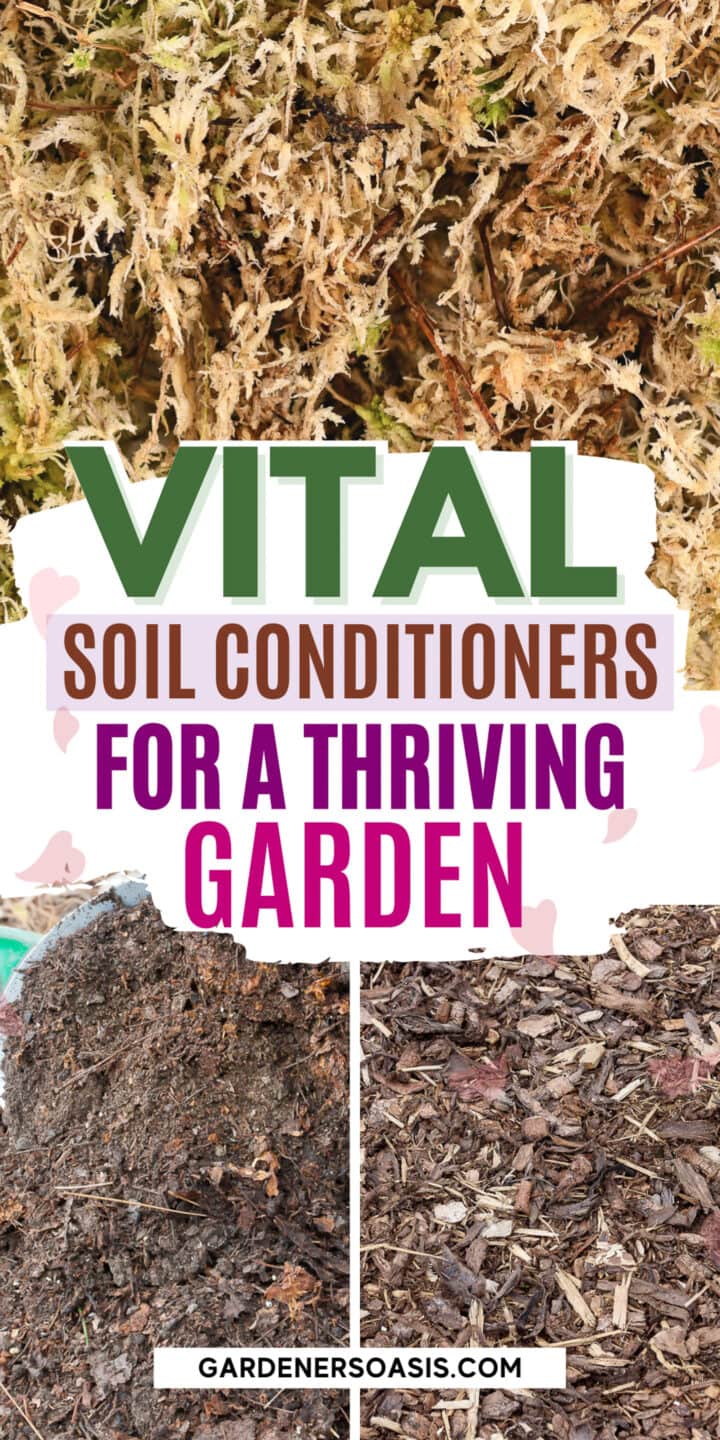
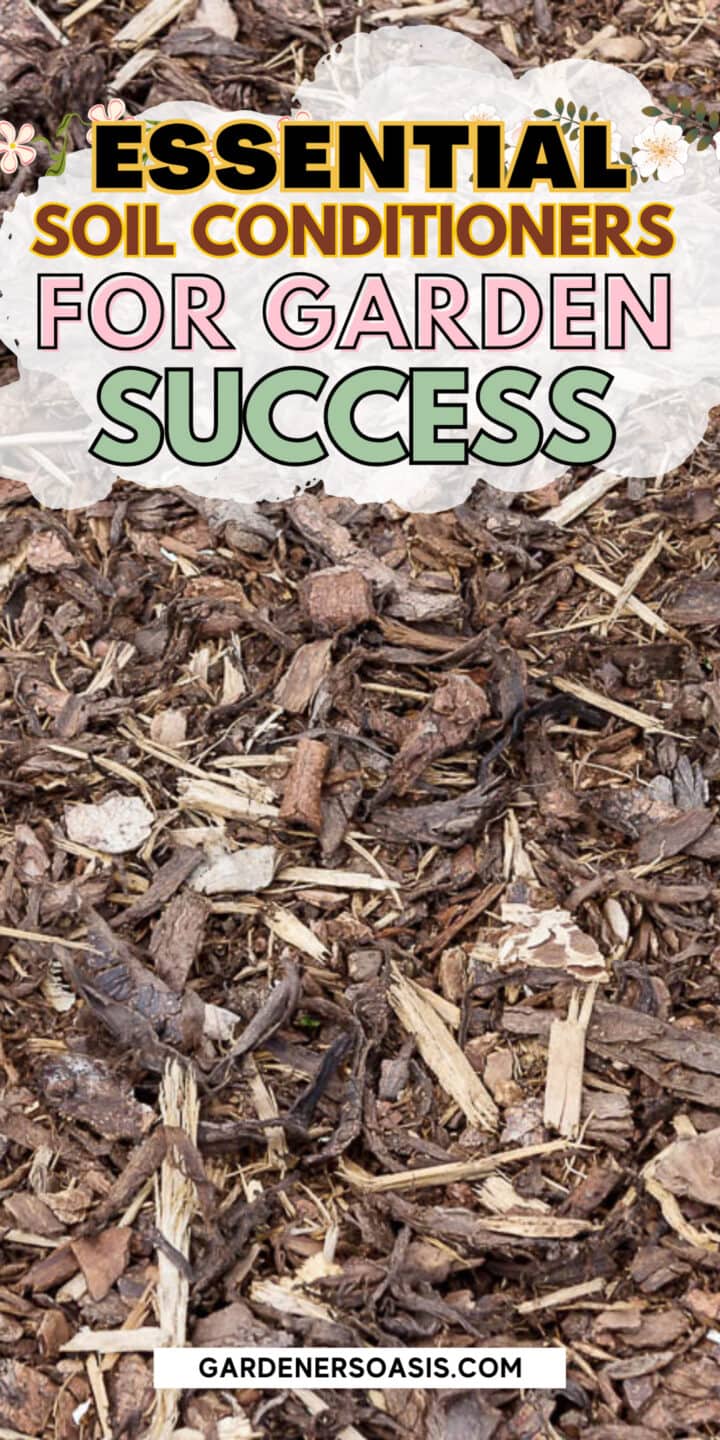
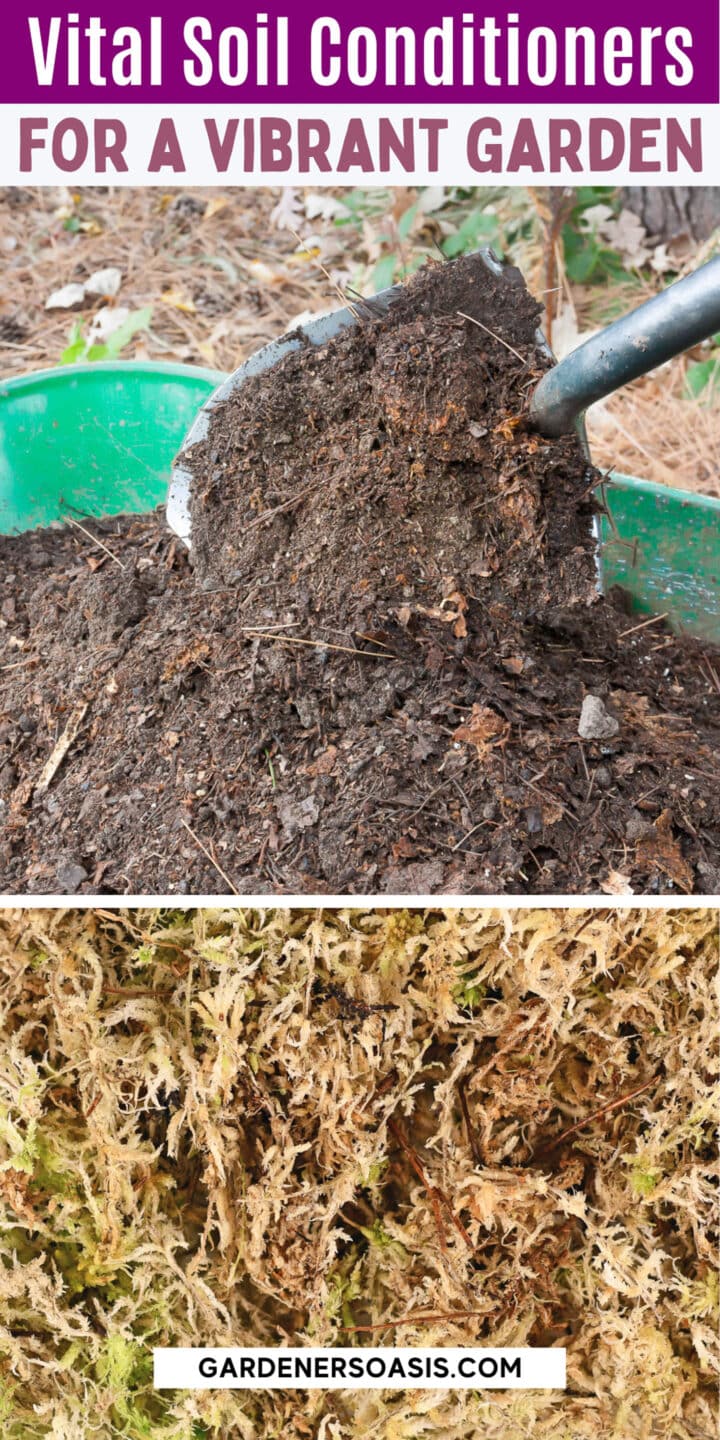
Very interesting 🧐.
I’m glad you found it helpful, Anna!